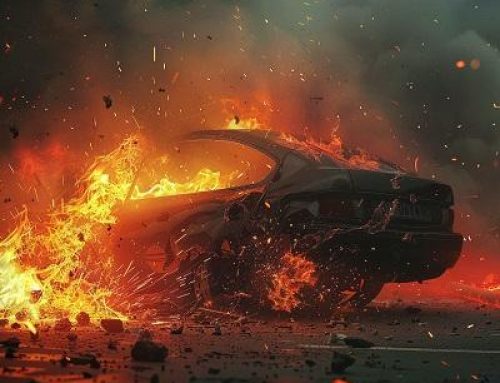In today’s world, we all know that drinking and driving is a dangerous combination. But did you know that driving while under the influence of drugs, prescription or otherwise, can be just as deadly? Impaired driving, whether from alcohol or drugs, is a serious problem on our roads. Every 45 minutes, a life is tragically taken due to the negligence and recklessness of an alcohol-impaired driver in America. A staggering 32 people lose their lives each day because of this preventable tragedy. In 2020, an alarming 11,654 individuals were killed in car crashes involving alcohol-impaired operators. This accounted for a staggering 30% of all fatalities caused by traffic incidents within the United States; this number has increased 14.3% from 2019 according to a CDC report. But it’s not just the impaired driver that is at risk. Drunk and drugged driving crashes can also cause harm to passengers, pedestrians, and even those in other vehicles.
The Governors Highway Safety Association reported that nearly half of all drivers fatally injured in 2016 tested positive for substances, and more than half of those individuals displayed traces of two or more drugs. It’s clear that the problem of impaired driving is a serious one. To combat this issue, not only is it important for law enforcement agencies to step up efforts to catch and prosecute impaired drivers, but education and awareness are also key in preventing it from happening in the first place. The National Highway Traffic Safety Administration (NHTSA) and the Department of Transportation (DOT) have launched campaigns to educate the public on the dangers of drunk and drugged driving. However, it’s not just about catching and punishing offenders, it’s also about taking actions to prevent it from happening in the first place. By working together and taking action, we can make our roads safer for everyone.
Now, let’s take a look at the 10-item checklist that can help us understand the dangers of impaired driving better.
- Slows reaction time: Alcohol and drugs can slow down a person’s reaction time, making it harder to react quickly to changing traffic conditions. This can make it difficult for the driver to respond to sudden stops or turns, or to avoid obstacles in the road. This can increase the risk of a collision, as the driver may not have enough time to react.
- Impairs judgment: Impaired judgment can cause a driver to make poor decisions, such as running a red light or weaving between lanes. This can put the driver and other road users at risk, as they may not be able to predict the driver’s behavior. Impaired judgment can also cause a driver to underestimate the risks of certain actions, such as driving at high speeds or not leaving enough space between vehicles.
- Blurs vision: Both alcohol and drugs can cause a driver’s vision to become blurry, making it harder to see other vehicles or obstacles on the road. This can make it difficult for the driver to identify potential hazards, such as pedestrians or animals on the road, and to react in time to avoid them.
- Causes drowsiness: Alcohol and certain drugs can cause drowsiness, making it difficult for a driver to stay alert and focused on the road. This can make it difficult for the driver to react to changing traffic conditions, or to stay awake during a long drive.
- Alters perception: Alcohol and drugs can alter a person’s perception of speed and distance, making it harder to gauge the speed of oncoming traffic or the distance to other vehicles. This can make it difficult for the driver to judge the appropriate speed or distance to maintain while driving, increasing the risk of collision.
- Impairs coordination: Both alcohol and drugs can impair coordination, making it harder for a driver to control the vehicle and maintain proper posture. This can make it difficult for the driver to steer the vehicle or to use the pedals, increasing the risk of collision.
- Causes confusion: Alcohol and drugs can cause confusion, making it harder for a driver to understand traffic signs or follow directions. This can make it difficult for the driver to navigate the road or to follow the rules of the road, increasing the risk of collision.
- Increases risk-taking behavior: Impaired drivers are more likely to take risks, such as driving at high speeds or making sudden lane changes. This can put the driver and other road users at risk, as they may not be able to predict the driver’s behavior.
- Causes memory loss: Alcohol and drugs can cause memory loss, making it harder for a driver to remember the route they are taking or the traffic laws they need to follow. This can make it difficult for the driver to navigate the road or to follow the rules of the road, increasing the risk of collision.
- Reduces ability to multitask: Impaired drivers may have difficulty multitasking, such as keeping an eye on the road while adjusting the radio or using a navigation system. This can make it difficult for the driver to stay focused on the task of driving and can increase the risk of collision.
It’s time to put an end to the senseless deaths caused by impaired driving. By working together and taking action, we can make our roads safer for everyone. Impaired driving, whether from alcohol or drugs, is a serious problem on our roads. It affects not only the impaired driver but also passengers, pedestrians, and even those in other vehicles. The problem can be addressed through a combination of law enforcement efforts, education, and awareness campaigns, as well as personal responsibility and the role of community in preventing impaired driving. By understanding the ways in which alcohol and drugs impair one’s ability to drive, and taking steps to prevent it, we can work towards making our roads safer for everyone.










